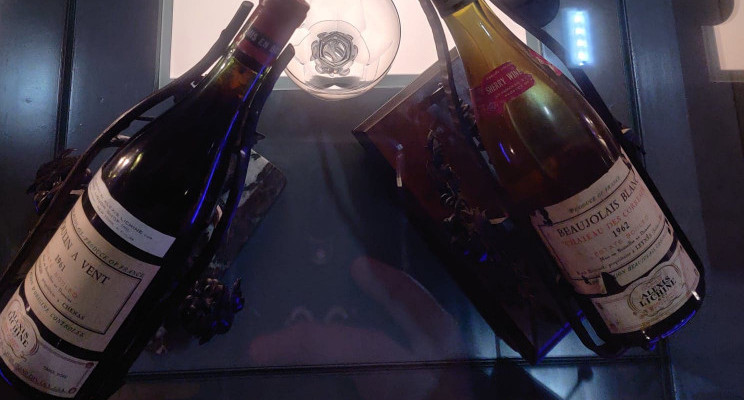
Best Beaujolais wine
Only a half-hour drive from Lyon, the Beaujolais region will take you back in time with its HISTORICAL monuments and architecture. Most of the buildings are built with a yellow ocher rock (“pierres dorées”) which gives the picturesque villages WARMTH and LIGHT, reminding me of Tuscany! On the “wine” side, it is, of course, famous for its Beaujolais Nouveau which unfortunately has a bit deteriorated the reputation of its wine.
So let me try to alter this image and present you with the BEST Beaujolais wines : Beaujolais wine is the “vins des copains”. It can be drunk EASILY, due to Gamay variety which is light and fruity, between friends any time of day.
But, be careful, being drunk easily does not mean it is not qualitative. The best Beaujolais wines covers a LARGE palette of styles : it can be either light and fruity, to be drunk in its youth, or can offer more complexity with aging.
Before we jump in, like any other region, Beaujolais offers white, rosé and red wines. However, their white wines do not excel at the same level as their neighbor in Burgundy and, hence, more effort is put into the RED wines. So the best Beaujolais wines will be red wines.
Give a dog a bad name and hang him… or don’t? Beaujolais’s second chance!
It is common knowledge that Beaujolais was more unloved than the Muscadet of the Trentes Glorieuses (Muscadet had a reputation for being a simple wine at the beginning of the 20th century).
But do you know WHY? (If you are familiar with my website, you would have noticed, I like to have a look at History. Usually the answers to most of our questions lay there.)
The story starts in 1395. A grape variety, whose parents are Pinot Noir and Gouais Blanc, is born and is called Gamay. However, this grape variety did not meet King Philippe the Bold’s expectations. He published an ordinance, by which he ordered the uprooting of the Côte des Nuits in Mâcon from all the plants of Gamay. He accused this “vile and disloyal plant” of tarnishing the reputation of Burgundy wines: “This gamay is of such a nature that it is very harmful to men […] many people who previously consumed it, have been inconvenienced by serious diseases; because this wine that is made and made with this plant, by its nature is full of a very great and unbearable bitterness […] because it gives off a strong and unpleasant smell”
The Gamay finds then refuge in an area further south: Beaujolais. It THRIVES on the granite and siliceous soils of the region. Beaujolais is thus confined to the “Burgundy lyonnaise” and Gamay becomes “the wine of the housekeepers” (according to the Swiss critic Michel Dovaz).
However, during the seventeenth and eighteenth centuries, there was a well-known competition between Mâcon and Beaujolais. The former thought it had a larger and healthier vineyard.
The disdain for the Gamay continues.
However, Lyon reversed the roles in the course of the seventeenth century. Indeed, supply taxes were four times more expensive for foreign wines than for wines from the Lyon government, of which Beaujolais is a part. Mâcon will try to reverse this trend and Colbert will even ask that they be lifted but nothing changed..
In 1642, the opening of the Briare canal allowed the export of Beaujolais wines to Paris and a century later, they reached the Loire region.
A famous French writer, Colette, had a thing for the Beaujolais, especially the Côte de Brouilly (one of the crus we will see later on in this post). She describes in a text of 1946, the joy of the harvest at Château Thivin: “La cour couverte résonnait de voix, de roues, de pas lourd-chaussés, car les quarante vendangeurs du domaine descendaient à leur repas, escrotés de leur gaillarde et vineuse odeur. J’aurais bien voulu les suivre… Notre repas froid, au rez-de-chaussée, les jambons, largement margés de lard, les saucissons qui fleuraient le harnais neuf et certain fromage qui “fort” qui provoque la soif et ne la laisse pas s’éteindre. à tout labeur, tout honneur : en bas, quarante vendangeurs avaient la meilleure table, servie d’omelettes, de veau, de poule, de cochon, et arrosée de ce vin qui, comme les plus beaux rubis, garde claire, aux lumières, sa sanguine et franche couleur.” (The covered courtyard resonated with voices, wheels, heavy-shod steps, because the forty harvesters of the estate died at their meal, defrocated with their gaillarde and vinous smell. I would have liked to follow them… Our cold meal, on the ground floor, the hams, largely margined with bacon, the sausages that bloomed the new harness and some cheese that “strong” that causes thirst and does not let it go out. to all work, all honor: downstairs, forty harvesters had the best table, served with omelets, veal, chicken, pig, and washed down with this wine which, like the most beautiful rubies, keeps clear, with lights, its sanguine and frank color.)
In 1964, Georges Duboeuf moved to Romanée-Thorins and strongly helped restore Beaujolais by putting his wine on the tables of the greatest chefs, such as Paul Bocuse. In this city, he founded the Museum of Wine and Wine in 1993.
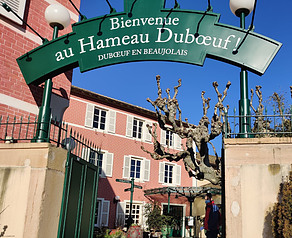
ANECDOTE : The starting point should definitely be the Hameau Duboeuf EXHIBITION. With this tour, through several animations, such as an automated theater or a 4D cinema (that are child-friendly so you can definitely do this theme park with children), you will learn ALL there is to learn about the Beaujolais region and wine. At the end, you will even be able to TASTE and enjoy up to two glasses of wine. To complete your visit, have lunch (or dinner) at the restaurant which will enable you to continue your wine-tasting while enjoying local specialties.
So why did this contempt last? The gamay has a great ability to adapt. Very reactive to the terroir and cultural practices, it is suitable for both “playful” wines and vintages of great ageing. Fresh and crunchy behind notes of red and black fruit, these complex and silky wines are capable of extreme finesse.
Beaujolais thus became popular with most of the population and the “little men”. In 1975, René Fallat, in his work Le Beaujolais nouveau est arrivé (phrase, by the way which will set in stone for generations to come) describes the France of “little people”, hesitating between the preservation of its traditions and modernity.
However, all’s well that ends well because Gamay was soon adopted by the Loire Valley and the French Alps (after the phylloxera episode of 1860.), before moving on to Ardèche, Gaillac, and later to Italy, New Zealand, Switzerland, Germany and Hungary…
Let’s talk climate, soil and grape variety
As said in the introduction, the 22 000 ha of the Beaujolais vineyard lies south of the Mâconnais. This region is protected from the winds (often rain-bearing) by the hills to the west. Summers are hot and winters cool, making it a temperate climate with continental influences.
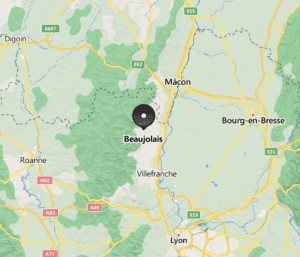
Beaujolais climate is ideal for its star variety : the GAMAY! The latter produces wines with red-fruit flavors, and especially raspberry or cherry, that can be low to moderately tannic. The complexity of the wine making in this region lies in the management of the vineyard. In order to concentrate the flavors, the winemaker has to limits its yield. This is why the best wines usually come from POOR granite soils.
In terms of winemaking, carbonic maceration (technique invented in Languedoc) is often used. This process allows the extraction of the color and not the tannins. The wines are round and fruity (with notes of kirsch, banana, chewing gum and spices).
What is carbonic maceration? The whole bunches are thrown into the tank and purged with carbon dioxide to remove oxygen. Intracellular fermentation then takes place. When the berries reach 2% alcohol, the berries burst and then release the juice. These berries are then pressed, in other words the juice is separated from the dandruff. Fermentation ends thanks to yeasts (often indigenous)
Semi carbonic maceration can also be used. This process allows a better integration of aromas from intracellular fermentation with those specific to the grape variety and produces wines with a fresher and fruitier character. The process is similar to carbonic maceration except that the tanks are not purged with carbon dioxide. The reasons at the bottom are crushed under the weight of the fruits and release juice. Indigenous yeasts can begin their work, which releases carbon dioxide. and the berries that have remained intact begin a carbonic maceration.
CHARDONNAY is the ONLY other grape variety, at the time anyway, in the AOC Beaujolais. It represents 5% of the region’s production. The small berries of Chardonnay are enjoyed on these terroirs of marl and limestone, which gives them aromas of peach citrus, as well as vanilla notes.
What are the crus du Beaujolais?
As any other french region, there is a HIERARCHY in the designations. Geographically, the Beaujolais designation concerns the east and south of the region near the Saône. For the Beaujolais nouveau, which we will talk about after, the grapes come from this area.
In the North and West part of the region, we will find thirty-nine villages which constitutes the “Beaujolais VILLAGES” and ten of them have their own designations. They are called the “CRUS du Beaujolais” : Saint-Amour, Juliénas, Chénas, Moulin-à-Vent, Fleurie, Chiroubles, Morgon, Côtes de Brouilly, Regnié and Brouilly.
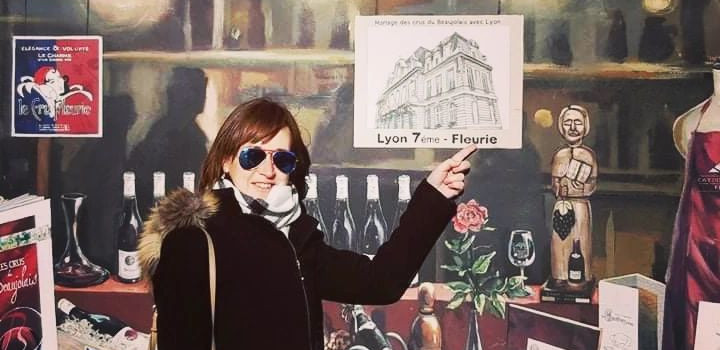
BROUILLY is the largest one. With its pink granite soils, it provides balanced, supple and gourmet wines, like Regnié or FLEURIE. The latter is one of the STARS of the Beaujolais Crus. Young, you will find some little red fruit and floral notes. With age, it earns some complexity with spicy notes.
CÔTE DE BROUILLY is a steep vineyard made from blue volcanic rocks. The wines that are produced there benefit from a beautiful FINESSE with aromas of black cherry.
MORGON is the largest one after Brouilly. The most famous one : Côte de Py, which is also on volcanic rocks. However, the soil in Morgon is in great majority crystalline soils that turn to red (nickname : “terres pourries” IE rotten land). This tint of red is due to an advanced alteration of shale and former eruptive blue-green lands which now produces complex and STRUCTURED wines. Morgon wines are the most “bourguignon” of the Beaujolais wines.
CHIROUBLES is the highest of the Beaujolais Crus. Its wines are fine with floral and fruity notes
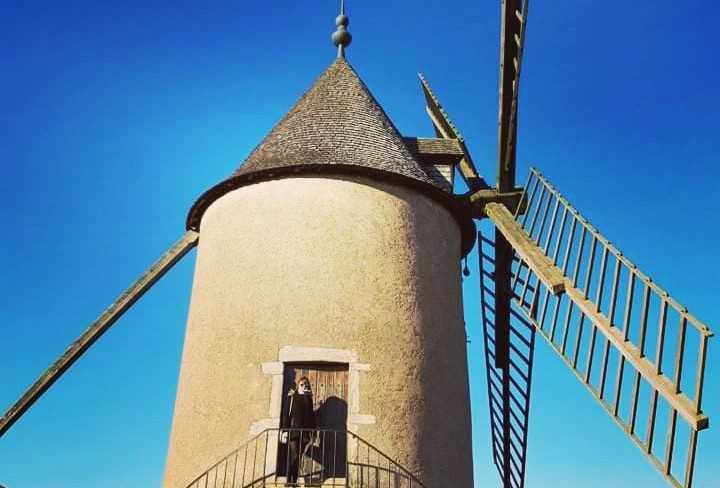 MOULIN-à-VENT is due to the windmill on the granite dome. They can be kept several years, like wines from CHENAS, whose tannins can even seem rustic in their youth.
MOULIN-à-VENT is due to the windmill on the granite dome. They can be kept several years, like wines from CHENAS, whose tannins can even seem rustic in their youth.
JULIENAS owes its name to the famous Jules César. This designation has a large variety of soils and is the less granite of all the Crus. Like its “father”, it produces a robust wine that is better left to age.
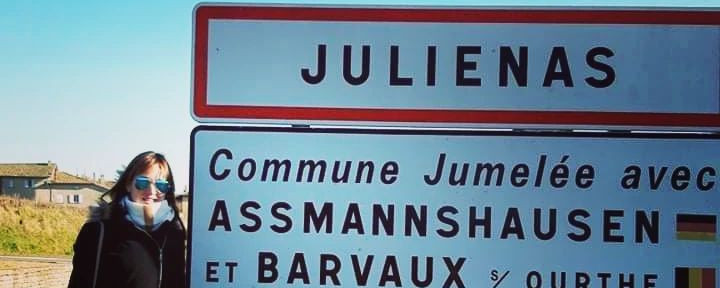
Last but not least : SAINT-AMOUR, which also has heterogeneous soils produces light and gourmet wines to more powerful and structured ones.
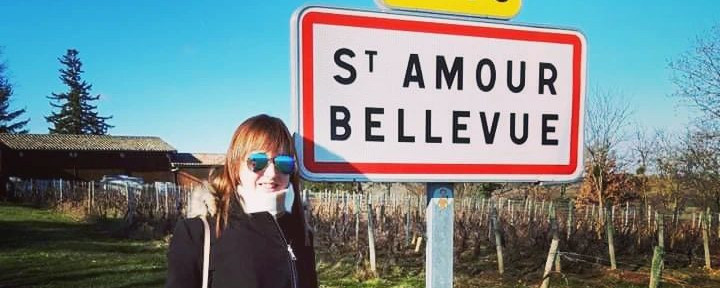
Most of the production comes from four of these villages : Brouilly, Morgon, Fleurie and Moulin-à-vent. Fleurie and Brouilly will provide light and fragrant wines whereas Morgon and Moulin-à-Vent will provide more structured wines. The latter age well in the bottle and become more complex with age.
ANECDOTE : Let me give you a mnemonic means to remember all the Crus :
In English : “Saint Julia Childs Makes Fine Coffee Mornings, Regularly Before Breakfast” OR “Some Japanese Canadians Marry French Canadians Making Really Beautiful Children” OR “Sweet Juice of Cherry Color Makes Fine Memories Regarding Beaujolais Crus”
In French : “Alors je cherche mon frère chez ma respectable cousine Berthe” with A for Saint-Amour, J for Juliénas, C for Chiroubles, M for Moulin-à-Vent, F for Fleurie, C for Chénas, M for Morgon, R for Regnié, C for Côtes-de-Brouilly and B for Brouilly.
Beaujolais nouveau
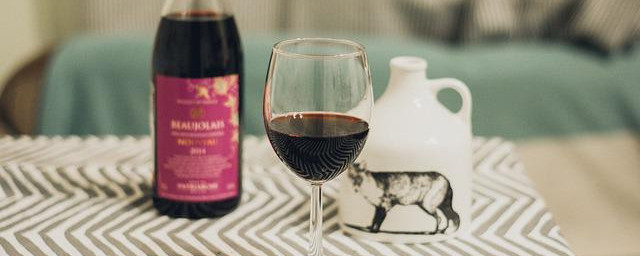
Every year, on the third Thursday of the month, the region celebrates the Beaujolais nouveau. But where does this tradition come from? On the 11th of March 1951, a new regulation requires that no wine should be sold before the 15th of December the same year. This new regulation does not sit well with the winemakers who ask to sell their wine before. This ask is accepted on the 13th of November 1951. In 1967, the new regulation states that wine can be sold starting from the 15th of November. However, for administrative reasons – the 15th of November being sometimes a Sunday-, is changed in 1985 to the third Thursday of November.
The Beaujolais Nouveau is a “primeur” wine, meaning it should be drunk in the following year. You may often hear that the Beaujolais Nouveau has a banana smell… This was often said to be due to an exogenous yeast, called 71B, used to help alcoholic fermentation start. However, this is not exactly true…
These aromas are due to the carbonic maceration we talked about earlier!
Because a winemaker is also a chemist at heard, let’s dig in further… This technique, in certain conditions of temperature, would create an ester, called isoamyl acetate. So banana aroma is not always THE indicator of a Beaujolais nouveau, but can just be the witness to a carbonic maceration (commonly called “carbo” by the winemakers)
However, some winemakers have stopped using this yeast and the Beaujolais Nouveau has found its grapes aromas back: you tell me next November!
All in all, Beaujolais has a lot to offer, other than the Beaujolais Nouveau. Having suffered from this reputation, these elegant wines are not expensive but very qualitative and can be kept several years. So if you are looking for a low-budget holiday, Beaujolais is the ultimate choice! Its many secrets are yet to be (re)discovered. When I started wine, I had my doubts, but having been there, Beaujolais wines have definitely found a place in my cellar! It is also the best wine to be drunk in hot weather, put it in the fridge an hour or two before and you can enjoy a red and refreshing wine on your balcony!
One last piece of advice : if you are, like me, into organized wine tours, I would suggest this one: it starts with the visit of the well-known (and beautiful) Château de PIZAY. There, you will be able to learn more about the wine-making and the importance of the soil, what we call in France : the “l’effet terroir”. Enjoy this wine route, through its wines and landscapes (Beaujolais is often compared to TUSCANY), taste nearly twenty wines (to a really fair price, which is not always the case). By the end, you will even obtain your first DIPLOMA! If you are interested, just click here.





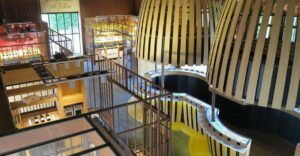
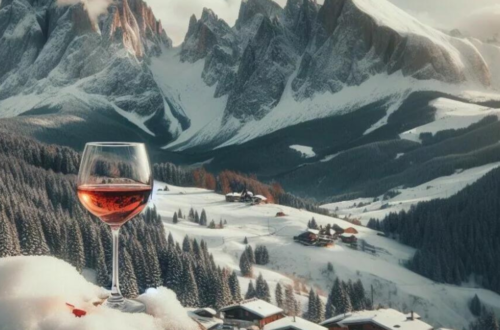
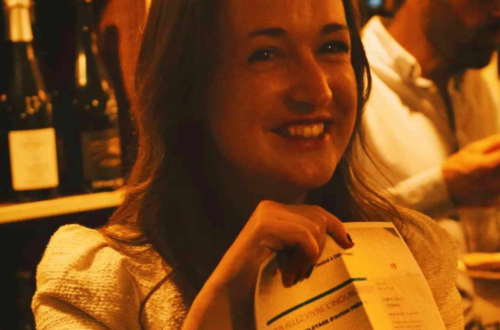
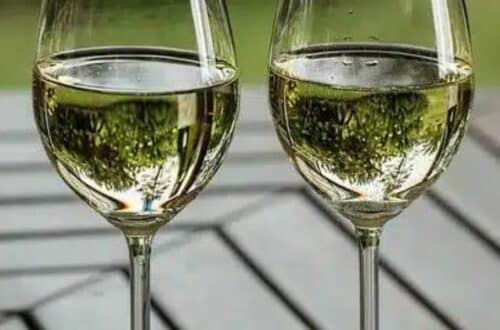
3 Comments
Bojana
France is often mentioned as the country of the best wines -red, white, sweet and dry. Most of the world’s most famous varieties that are present in many countries come from France. Thanks to centuries of winemaking experience, quality soil, microclimates and grape varieties, no country can compete with France in wine production.
Fabienne
Le parc du “Hameau Duboeuf” est un très bon point de départ avant d’aller flaner dans la campagne.
Je vous recommande de déjeuner sur place (mais penser à réserver !)
N’hésitez à profiter de votre visite du Beaujolais pour flâner à la terrasse de Chiroubles où vous pourrez profiter d’une très belle et dans les villages des Pierres Dorées, pour allier découverte vinicole et découverte culturelle.
Bonne dégustation à tous
Mademoiselle
Merci beaucoup Fabienne d’être passée et pour ton commentaire!!